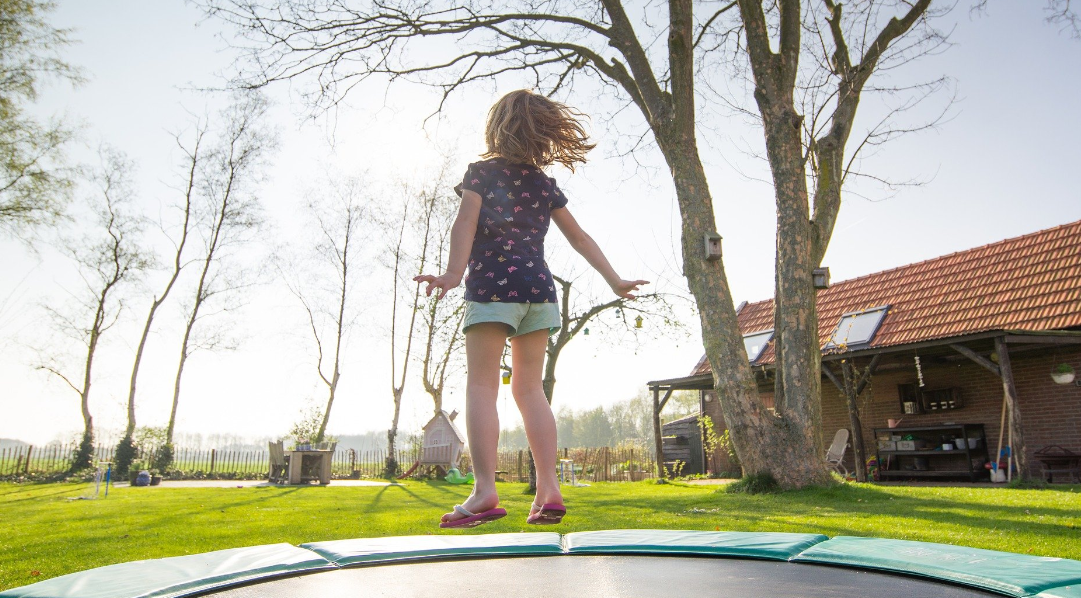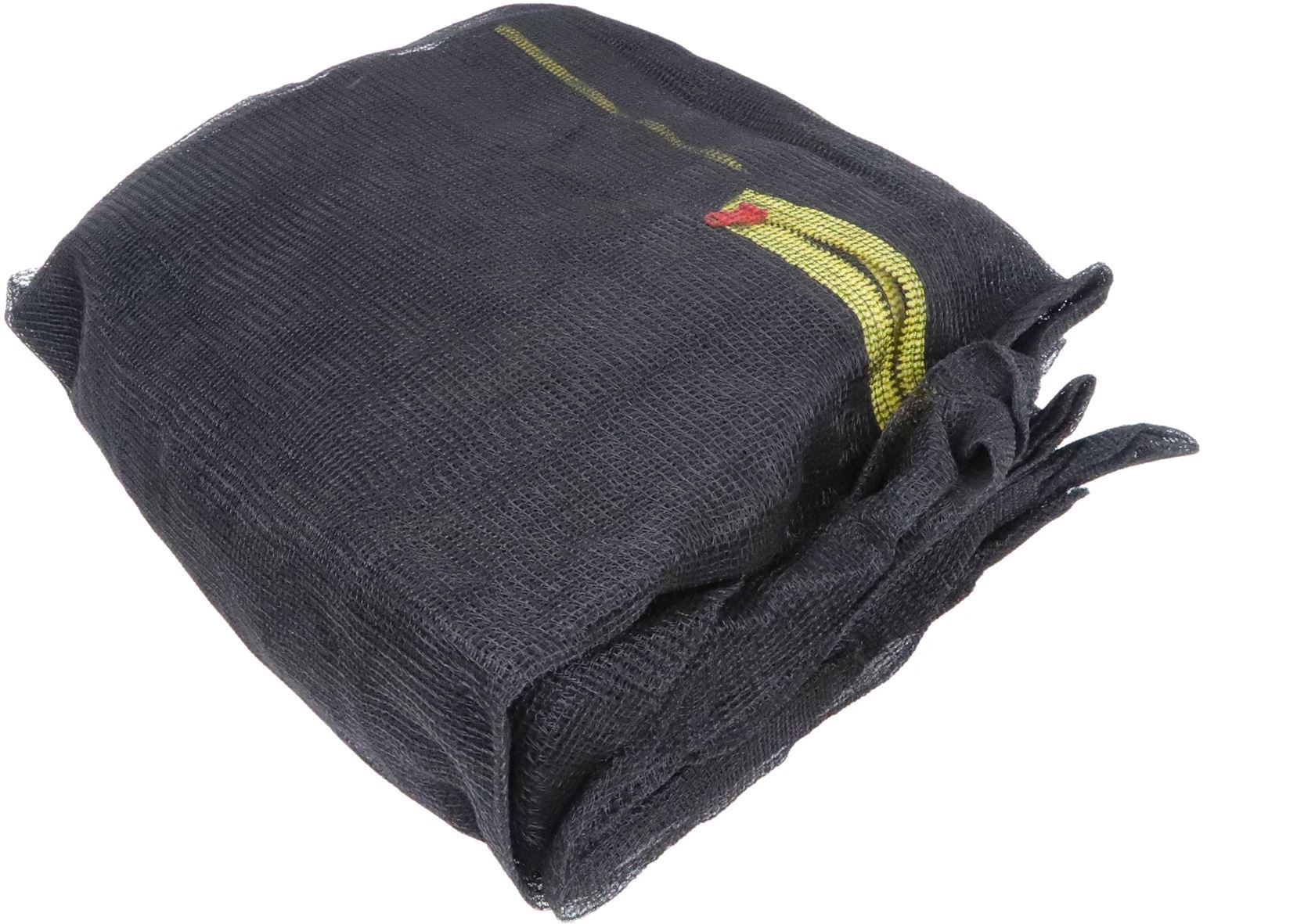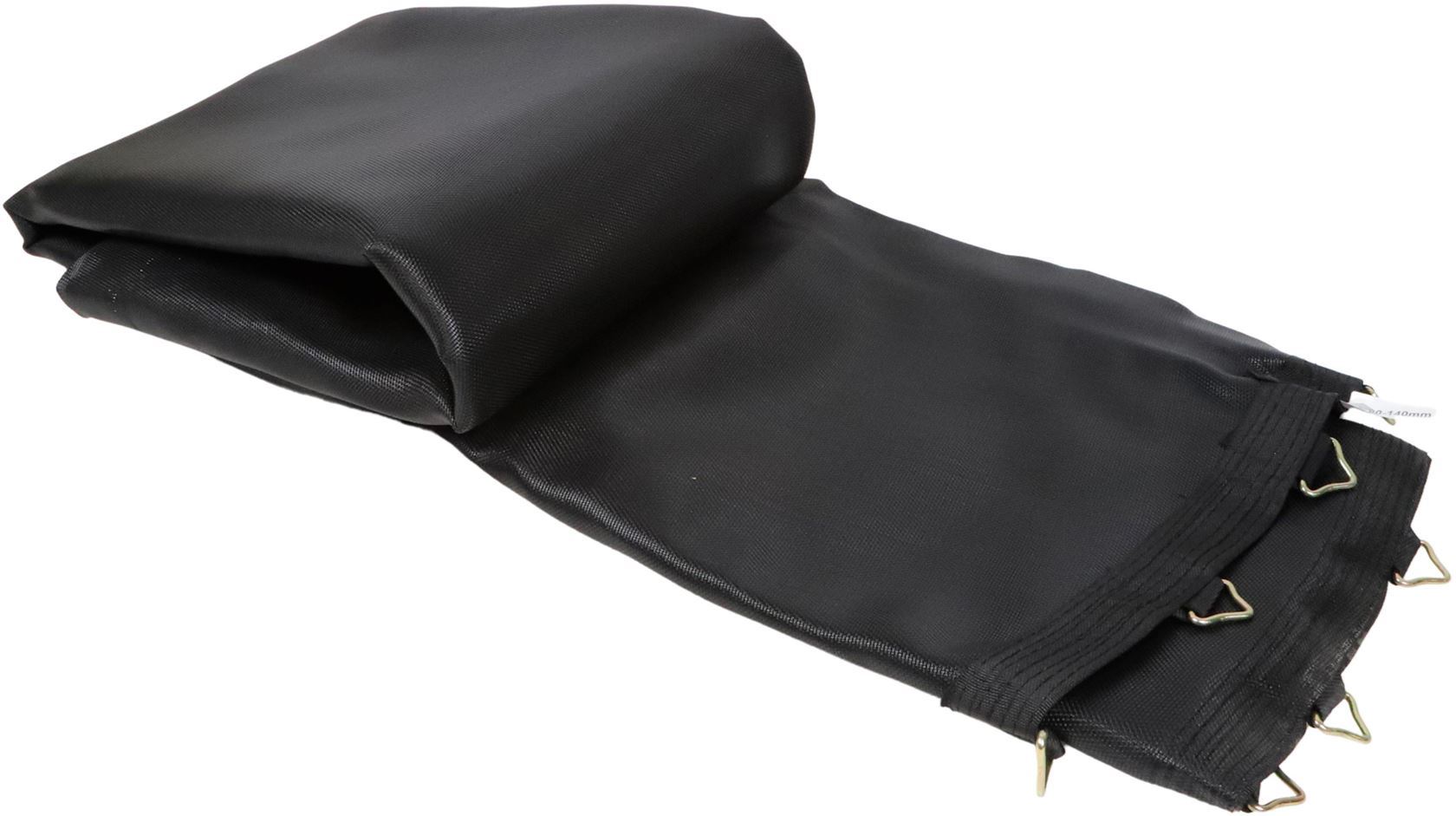Trampolines voor dummies
A trampoline from Hermie will transform you into a superhero in your own garden!
Choice stress? We'll help you! 👇

Built up
Our range includes a host of build-up trampolines on legs. These above-ground trampolines have numerous advantages, such as:
- you can quickly assemble, dismantle and store the freestanding trampoline;
- you do not need a pit, which keeps your lawn beautiful and avoids digging. That saves you a lot of work;
- Build-up trampolines are generally a bit stronger and can therefore carry more weight, allowing bigger children (and of course hip adults) to jump along. The carrying capacity is mentioned with each trampoline. Be sure to stick to this, because exceeding the maximum weight can cause dangerous situations and damage the trampoline.
- It is easier to install a safety net;
- a build-up trampoline can be moved immediately.
Form
Rectangular or square trampolines
These trampolines take up less space, making them ideal for smaller gardens. In addition, you have just a little more control over your jumps with a rectangular trampoline and can therefore perform more technical jumps. Professional jumpers or fitness fanatics therefore prefer a square or rectangular trampoline.
Round trampolines
In contrast, these trampolines are extra safe because it is easier to jump to the centre. Also, the tension on the springs is the same everywhere, so you have the same feeling everywhere while jumping (so the weight is distributed nicely). A round trampoline is therefore ideal for smaller children because it is just a bit safer. Safety first!
Dig in
In this category, we think it is important to make a distinction between inground and ground-level trampolines:
Inground
Groundlevel
Size
Bigger is not always better, so choose a suitable size according to the user. If the trampoline is only used by small children, it is best to choose the smallest size. Do you want to jump with several people at once? Then go for a bigger and sturdier model that can/may be used more intensively.
Protection
A trampoline has to endure a lot: playing children, jumping parents, different weather conditions, moving house and so on. Of course, you want to enjoy your trampoline as long as possible; therefore, we have listed some useful tips to protect your trampoline and extend its lifespan;
- always try to store the trampoline or cover it (with a cover) to protect it from rain, snow, hail or falling leaves. This also prevents slippery moss! Especially during the winter months, the parts can suffer from cold temperatures and it is wise to put them away safely;
- the springs also need protection so that they do not break. Therefore, always install the protective edge to protect both the springs and yourself;
- sometimes strong gusts of wind or squalls can blow away your trampoline (and in the worst case, damage it). Therefore, use an anchor set to secure the trampoline in the ground. Moreover, the trampoline will not move while jumping if it is anchored into the ground;
- always jump without shoes to protect the jumping net from damage (e.g. stones stuck between the soles of shoes);
- do not put weights on the trampoline so that the net does not sag over time. Also during winter, it is best to clear all snow so that it does not sag.
Safety
Do you want to be sure that your children can play safely outside on their trampoline? Then always use a safety net (this is, by the way, compulsory with build-on trampolines). Also, always place the trampoline on the lawn (where the ground is solid) and far enough away from objects like flower boxes or walls. Should someone, due to exceptional circumstances, still land next to the trampoline, the grass will already absorb a part of the shock. Also develop a few rules for the youngest so they always jump safely (e.g. "always take your shoes off on the trampoline" or "always use the ladder to get into the trampoline").

Price
- Quality of materials: trampolines made of high-quality materials, such as sturdy metal for the frame and durable springs, can be more expensive than trampolines made of cheaper materials;
- Size and shape: larger trampolines and trampolines with unique shapes, such as rectangular or oval trampolines, can be a bit more expensive than small, round models;
- Safety features: trampolines with additional safety features, such as sturdy safety nets, thick protective pads or safety tiles, may be more expensive than trampolines without these features;
- Brand and reputation: trampolines from well-known brands with a good reputation for quality and durability may be more expensive.
Accessories
• Perimeter pad
A safety pads with a wide rim is very important, so that all springs of the trampoline are nicely protected. A thick and firm one also protects children better in case of a fall on the safety pads.
• Frame
Solid tubes and tube walls form the perfect basis for a safe trampoline. These namely ensure stability and can better absorb large shocks.
• Springs
Do you want to enjoy your trampoline for a long time? Then solid, long springs are a must! A large number of springs namely gives more jumping power and ensures that the trampoline can hold more weight.
• Safety net
It's compulsory to have a safety net for every trampoline. This way no accidents can happen when practising wild tricks. Is the net damaged? Buy a replacement net to avoid future problems!
Did you already make your choice? We have trampolines in various sizes, shapes and colours! Discover all our trampolines here
More info? Receive all our gardening tips directly in your mailbox!
We'll only email you handy facts, green advice and our best promotions & discounts. You'll receive it about once a week and you can unsubscribe at any time.
No spam, promise 🤞
















